Across the pond Winslow Homer is a household name; in his day, he was regarded as the greatest living American painter. He was renowned especially for his seascapes and his most famous painting, The Gulf Stream, 1899/1906 (main picture) features in the National Gallery’s retrospective.
A small boat with a broken mast bobs about on stormy waters, at the mercy of the waves. Clinging to the deck is a lone sailor, a black man desperately scanning the horizon for help. He needs it; the sail lies in a useless heap and nothing else is on board beside a few sugarcanes. As if to emphasise the extremity of his plight, the boat is surrounded by sharks that dip and dive in waters flecked with blood. Is the man a runaway slave or is he an emblem of slavery in general?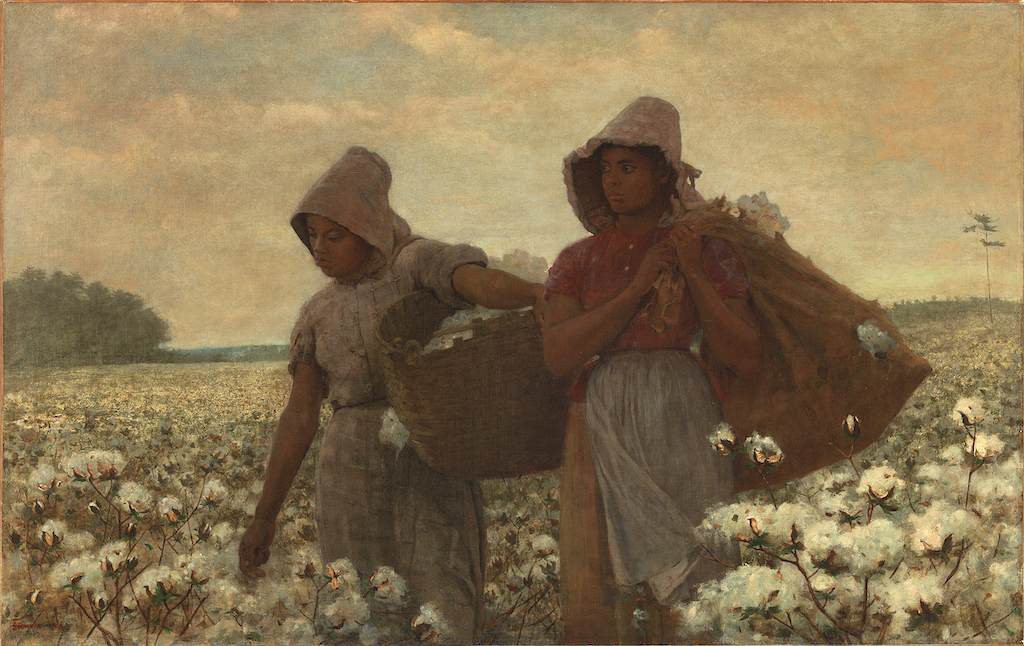 Homer’s pictures often contain references to hot topics, such as colonialism and the slave trade; but when asked to explain them, he always kept schtum – preferring ambiguity over explication.
Homer’s pictures often contain references to hot topics, such as colonialism and the slave trade; but when asked to explain them, he always kept schtum – preferring ambiguity over explication.
He started life as an illustrator before being appointed as a war artist embedded with Federal troops in the American Civil War. One can reasonably assume, then, that his sympathies lay with Unionists rather than Confederates. Dressing for Carnival was painted in 1877, the year Federal troops finally left the South. Two black women sew a man into the costume of the Lord of Misrule in preparation for Independence Day – an excuse to celebrate Black liberation. In reality, though, there wasn’t much to celebrate. When Homer revisited Virginia after the war, he discovered that life had scarcely improved for former slaves, many of whom now worked for a pittance on the plantations.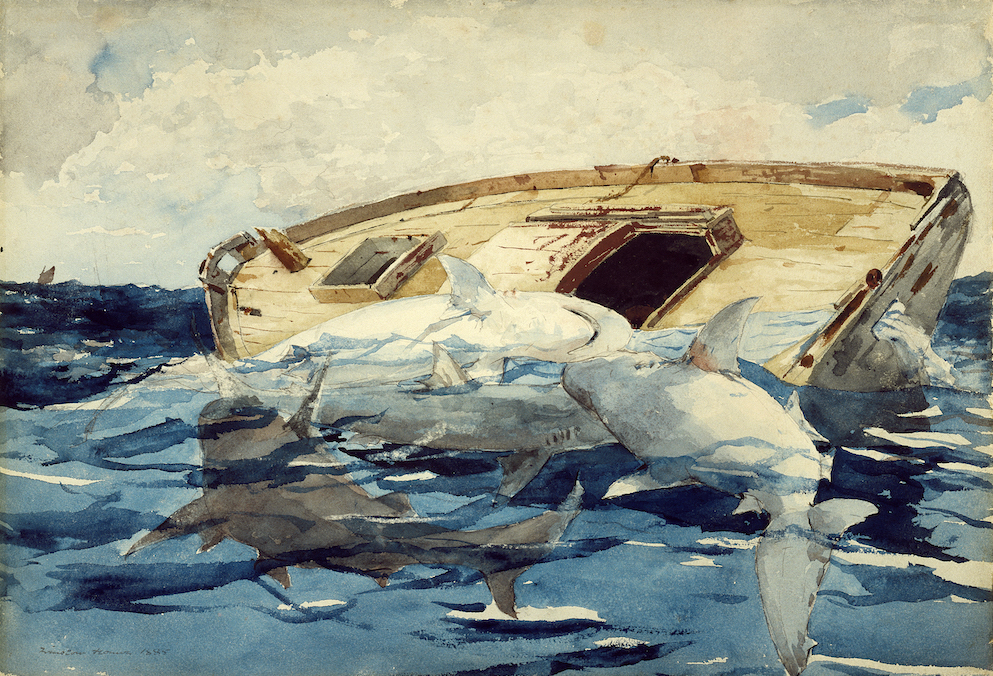 In 1866 he set sail for Paris where two of his war paintings were included in the Exposition Universelle. Also on show was The Gleaners 1857 by Jean-Francois Millet, which must have inspired Homer’s painting of two black women toiling in the fields. The Cotton Pickers 1876 (pictured above) shows unusual respect for the women heroically silhouetted against the sky. Ironically, the picture was bought by an English cotton merchant. Did Homer’s sympathetic treatment convince him that abolition had transformed black lives into a bed of roses?
In 1866 he set sail for Paris where two of his war paintings were included in the Exposition Universelle. Also on show was The Gleaners 1857 by Jean-Francois Millet, which must have inspired Homer’s painting of two black women toiling in the fields. The Cotton Pickers 1876 (pictured above) shows unusual respect for the women heroically silhouetted against the sky. Ironically, the picture was bought by an English cotton merchant. Did Homer’s sympathetic treatment convince him that abolition had transformed black lives into a bed of roses?
Reams have been written about The Gulf Stream and the picture comes so freighted with meaning that it’s hard to see it afresh. Homer also reworked the canvas and it feels laboured, especially when compared with the rapid pencil sketch that sparked the idea and his limpid watercolour focusing on the leaping sharks (pictured above).
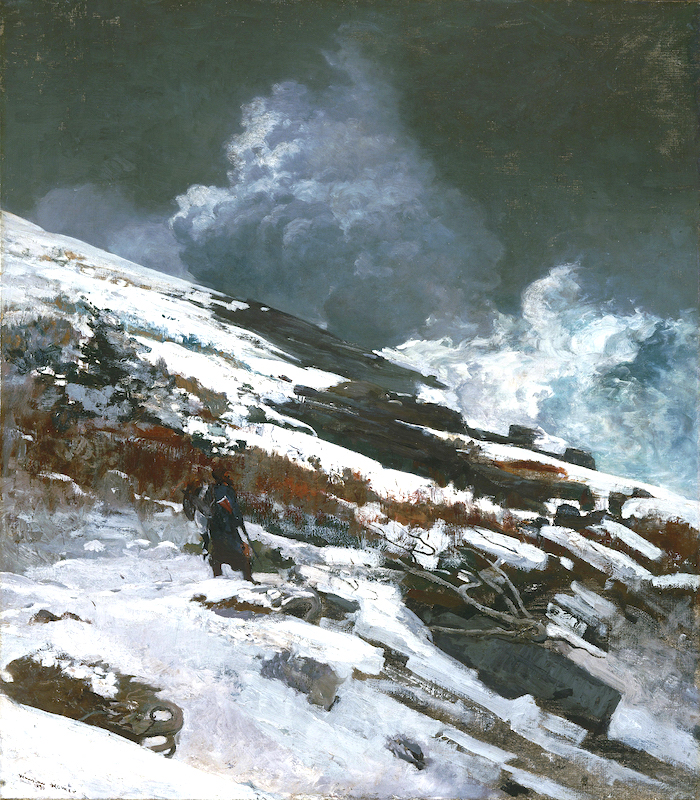 During trips to the Caribbean and elsewhere he made wonderfully free watercolours and, back in the studio, he translated them into oils, sometimes to disastrous effect. Undertow 1886 shows heroic chaps rescuing two drowning women; cue for bare chests and wet dresses clinging to nubile bodies. Nothing is convincing; the waves aren’t threatening enough while the people, who form a neat row in the surf, are obviously models posing in the studio.
During trips to the Caribbean and elsewhere he made wonderfully free watercolours and, back in the studio, he translated them into oils, sometimes to disastrous effect. Undertow 1886 shows heroic chaps rescuing two drowning women; cue for bare chests and wet dresses clinging to nubile bodies. Nothing is convincing; the waves aren’t threatening enough while the people, who form a neat row in the surf, are obviously models posing in the studio.
Sometimes though, as in The Life Line 1884, (pictured below) drama carries the day. Dangling from a steel cable above foaming waves, an unconscious woman is winched to safety. Blowing in the wind, her red scarf obscures the face of her rescuer. It’s a brilliant touch; the flash of red in an otherwise monochrome painting emphasises the danger of the mission, and the man’s anonymity ameliorates the intimacy of their clammy embrace.
While Homer’s successful paintings can be glorious, the watercolours and less flamboyant oils are the main treat here. In 1883 he moved into a studio overlooking the sea at Prouts Neck, Maine and began focusing on the ocean as an elemental force. The drama of Winter Coast 1890 (pictured above right) is created solely by the composition. A loan hunter stands watching huge waves batter a snow-covered coastline. The diagonal slope of the land makes everything feel unstable; it’s as if, at any moment, the rocks might slide from under his feet into the sea.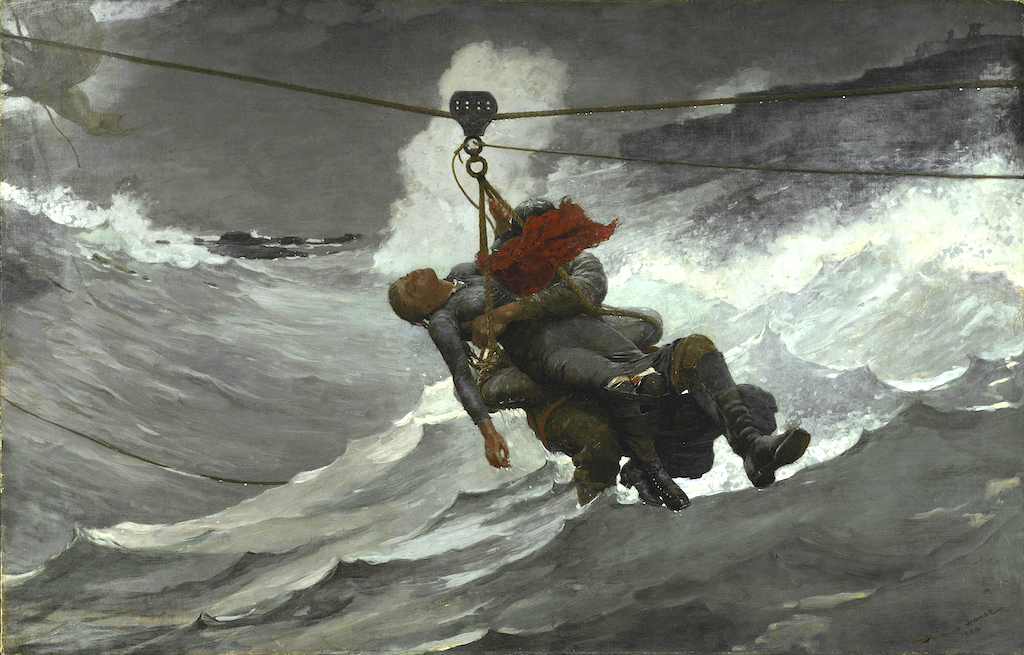 Looking for Added Significance, American critics and art historians liked to read into this intimations of mortality, but as with The Gulf Stream, loading symbolism onto this small work only dulls its immediacy. Wisely, Homer left them to it, and didn’t die for another 20 years.
Looking for Added Significance, American critics and art historians liked to read into this intimations of mortality, but as with The Gulf Stream, loading symbolism onto this small work only dulls its immediacy. Wisely, Homer left them to it, and didn’t die for another 20 years.
- Winslow Homer: Force of Nature at the National Gallery until 1 January 2023
- More visual arts reviews on theartsdesk

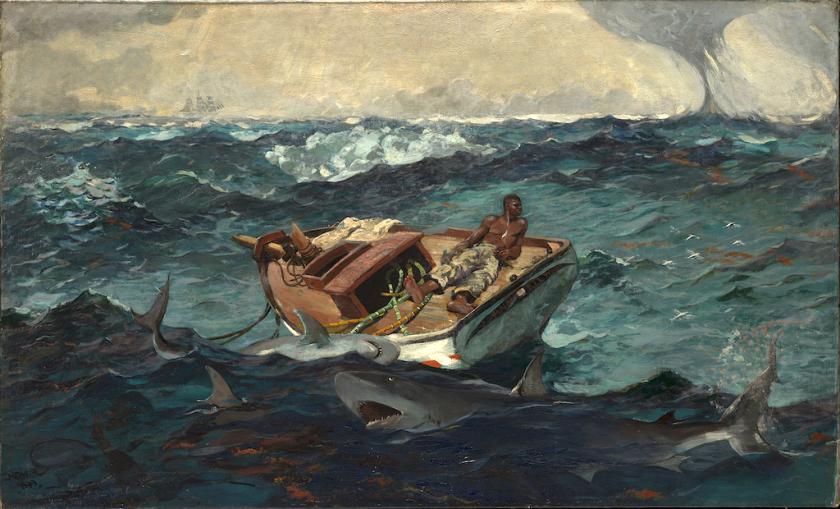







![SEX MONEY RACE RELIGION [2016] by Gilbert and George. Installation shot of Gilbert & George 21ST CENTURY PICTURES Hayward Gallery](/sites/default/files/styles/thumbnail_125_x_125_/public/mastimages/Gilbert%20%26%20George_%2021ST%20CENTURY%20PICTURES.%20SEX%20MONEY%20RACE%20RELIGION%20%5B2016%5D.%20Photo_%20Mark%20Blower.%20Courtesy%20of%20the%20Gilbert%20%26%20George%20and%20the%20Hayward%20Gallery._0.jpg?itok=3oW-Y84i)





Add comment